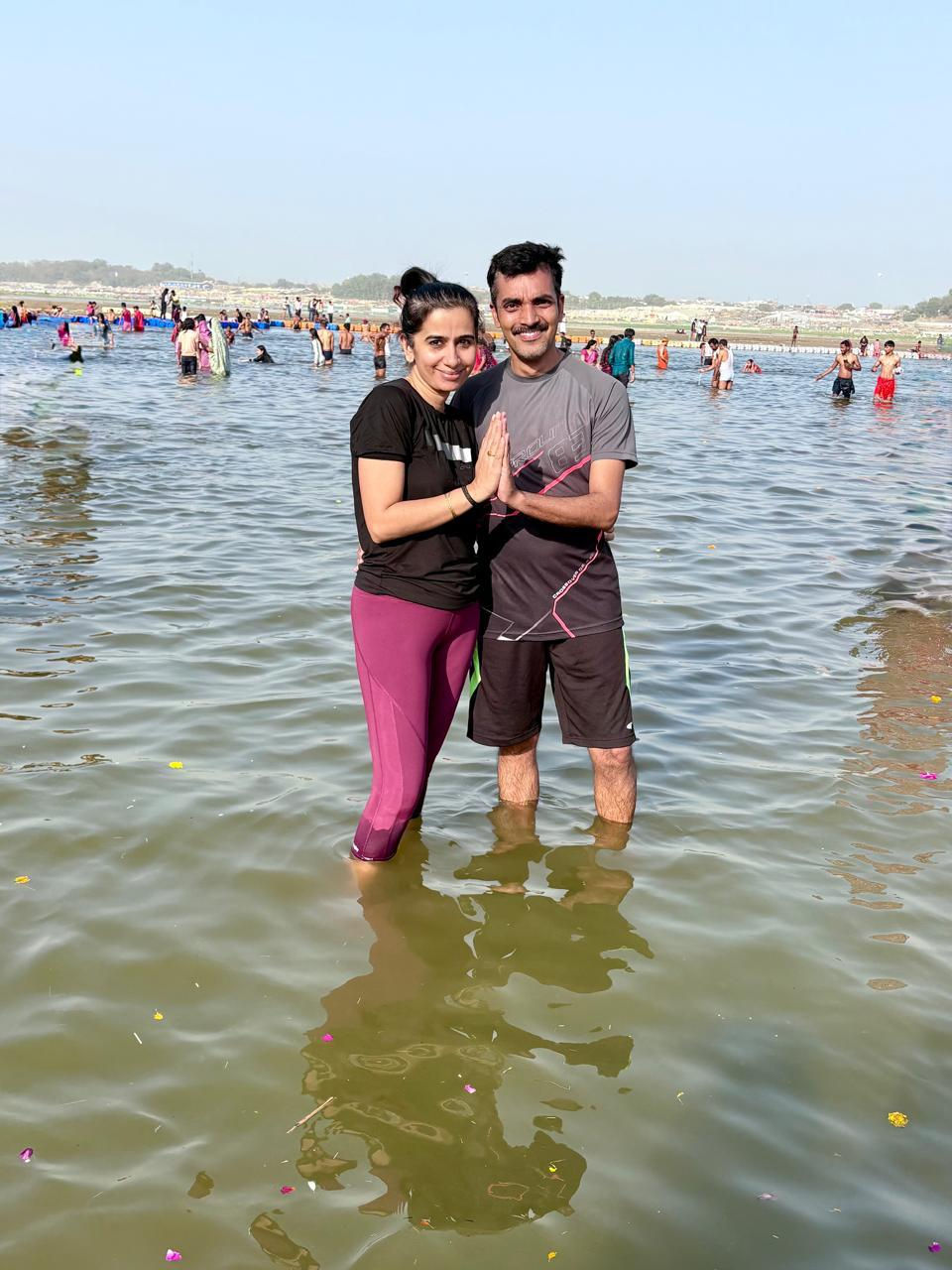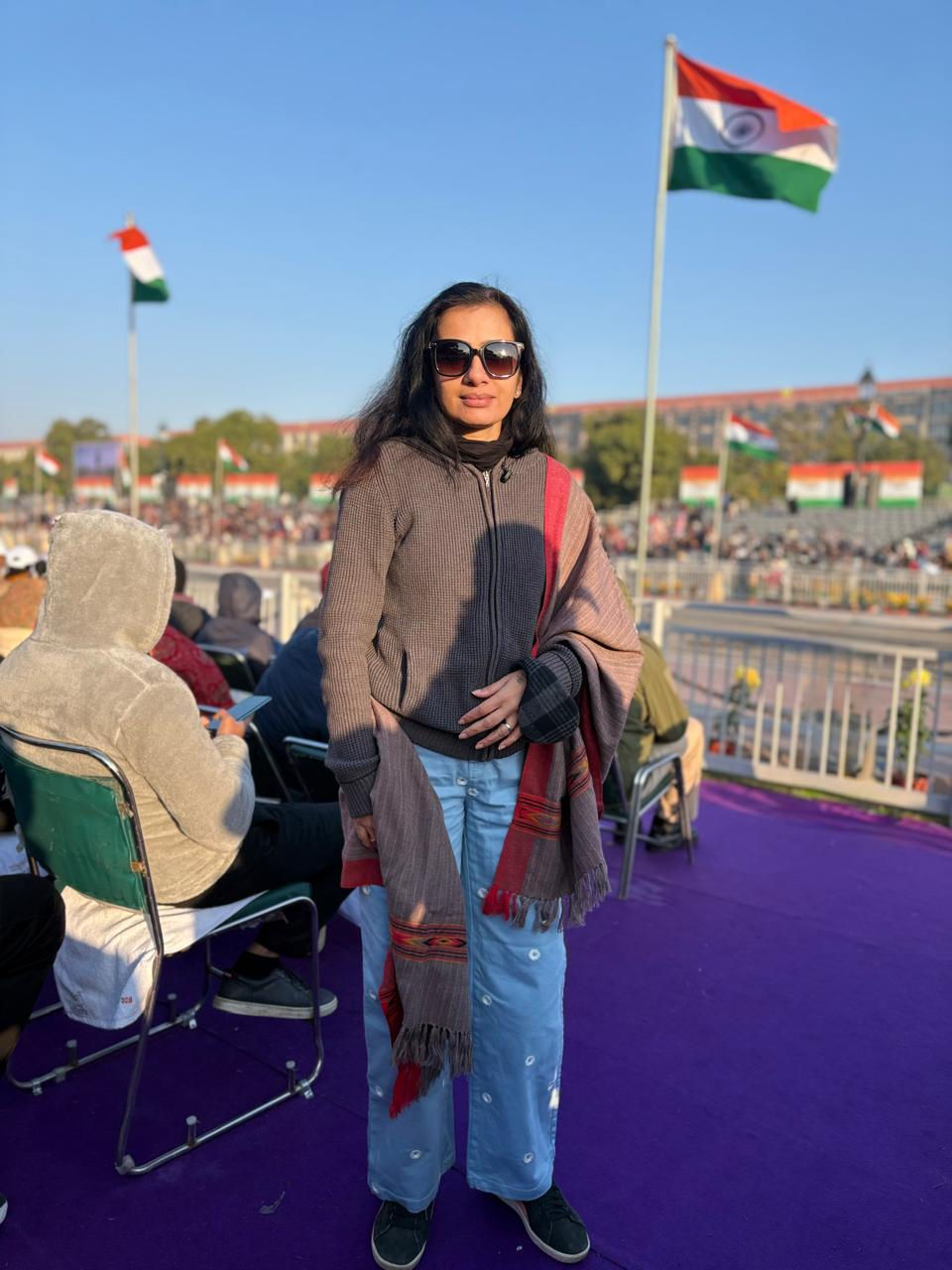Divine Jammu to Serene Kashmir
- Dhanya Damodaran

- Jul 20
- 6 min read
Visited in June 2025
On April 22, 2025, a tragic and cowardly terrorist attack took the lives of 26 innocent tourists in Pahalgam, Kashmir, India. During the peak holiday season, tourists flocked to Kashmir to experience the valley's stunning beauty. This tragic event brought many lives to a halt. All of India united in condemning the attack, honoring the lost lives, and expressing solidarity with the people of Kashmir. While those who lost their lives in this heinous act by terrorists are mourned, the local Kashmiris are also genuine victims of such incidents. Following a period of unrest in Kashmir during the 90s and after the abrogation of Article 370, the tourism sector experienced significant growth, with people from across India visiting the valley, enjoying their vacations without fear, and leaving with cherished memories. Visitors were captivated not only by Kashmir's natural beauty but also by the warm hospitality of the Kashmiri locals, whether they were local food vendors, guides, taxi drivers, hotel or houseboat owners, or shikara riders. From my own experience 10 years ago, I was amazed by the warmth of Kashmiris and the love and respect they offer every tourist.
Those who disliked the normalisation of life in Kashmir, with young people finding ample employment and gaining financial independence, moving away from stone pelting, extremism and terrorism, would have been unsettled by the peace and prosperity there. It is then that they resorted to cowardly acts against tourists, knowing these visitors are a vital source of income for many Kashmiris working in the tourism sector. Although things might have come to a halt for a few days and tourism may be slow to recover, I am completely confident that no Indian would abandon the people of Jammu and Kashmir. I am certain that thousands will continue to visit the valley, contributing to its prosperity and above all, we will not allow the agenda of terrorists to harm Kashmir.
We had been eager to visit Shri Mata Vaishno Devi for a long time. We were just waiting for Jammu and Kashmir to open for tourists again after the Pahalgam incident before planning our trip. Moreover, we wanted to complete the journey before the monsoon season started in Jammu, so we decided on mid-June for our visit.
The Shri Mata Vaishno Devi temple is accessible every day throughout the year. Visitors can organize their darshan, accommodation, and more on the official website - https://www.maavaishnodevi.org/. Helicopter services are available to travel directly between Katra and Sanjichhat.
Around the same period, the highest railway arch bridge across the Chenab River, connecting Jammu to Kashmir, was inaugurated, with Vande Bharat trains running on the route. This was exciting news, and we were eager to explore it as well. Thus, we planned a 4-day trip.
We flew from Kochi to New Delhi and from there by Vande Bharat to Katra. The train started at 6am from New Delhi and in 8 hours reached Katra via Ludhiana, Pathankot and Jammu Tawi.
We checked in to our hotel, Amrithara Maa in Katra, hired a taxi and visited the nearby Dhansar baba temple, Chamundi temple etc.
That evening, we also explored the market of Katra, and had yummy Rajma Chaval from Nathu's Restaurant near the bazar. We loved it so much, that we bought a bag full of local Rajma and their unique masala from a shop in Katra.
The following day, we began our journey early in the morning at around 5 am. We headed to the counter to collect the RFID, which is essential for visiting the temple. We then embarked on our ~14 km uphill trek to seek blessings from Mata Vaishno Devi. There are two routes available: the old route and the new route. The old route passes through Baanganga, Charanpaduka, Ardhkuwari, Sanjichhat, and Bhavan, while the new route goes via Tarakote, Ardhkuwari, Himikoti, and Bhavan. The old route has more shops and eateries along the way and is also where ponies can be hired for rides. So, it is often busy and crowded with pilgrims and ponies. The new route is well-paved, wide, clean, and designated solely for pilgrims on foot. We opted for the old route uphill and took the new one to descend after darshan.
Even though it drizzled and rained for a while during our hike, it didn't cause any discomfort because the entire pathway is covered and well-maintained. Throughout the journey, we could hear the chants of 'Jai Mata Di' everywhere, which provided a great energy boost for the climb. After reaching the Bhavan, we secured all our belongings in a locker and then joined the queue for darshan. We were able to visit the shrine and seek blessings at the serene sanctum of Mata Vaishno Devi, who resides in the 'pindi roop' of Maha Kali, Maha Saraswati, and Maha Lakshmi.
We had reserved the cable car to Bhairavnath temple from Bhavan through the website. After completing the darshan, we took the cable car to Bhairavnath temple, located 2.5 km above Vaishno Devi Bhavan.
After our darshan, rested for 10-15 minutes, and then began our descent. Upon hiking down for around 6km and reaching Ardhkuwari, we had our lunch and proceeded on the new route back to Tarakote.
Visiting and offering prayers to Mata Vaishno Devi was truly divine, and I felt thankful and blessed for being able to make it happen.
Having spent nearly the whole day hiking up and down the hill and walking about 28 km, we were extremely hungry, enjoyed a sumptuous dinner at our hotel, and then went to bed.
The following morning was filled with excitement as we prepared to board the Vande Bharat train from Katra to Srinagar. Before this route opened in early June 2025, there was no railway connection from Jammu to Kashmir. The only options were by air and via the National Highway. With the opening of this railway line, the travel time from Jammu to Srinagar has been reduced by over 4 hours!
The train traversed the newly constructed Anji Khad bridge, India's first cable-stayed railway bridge, and then the Chenab bridge. The Chenab bridge is truly a remarkable engineering marvel and is the world's highest railway arch bridge, built over the Chenab river. This connects Jammu to Srinagar by train. The train also passed through several tunnels consecutively, including the longest railway tunnel, which is approximately 12 km long.
Upon reaching Srinagar, we were welcomed by our driver / guide Aarif bhai at the railway station. We drove to a dhaba to have lunch and then headed to Gulmarg. Aarif bhai was super keen to make sure of our comfort and that he took great care of us. He suggested Kashmiri Pulao and Nadru (Kashmiri delicacy made from lotus stem). It was indeed tasty and filling.
We drove past the scenic landscapes and reached Gulmarg. Iqbal bhai was our guide for local sight seeing in Gulmarg. We only had one demand, show us the most beautiful place and let us sit, relax and enjoy the views there. He did exactly the same.
During our last visit to Gulmarg in March 2014, the entire area was blanketed in snow. This time, however, the summer view was astonishing! It had become a meadow filled with countless flowers, truly living up to its name. I was mesmerised by the place's serenity and beauty. With a stunning mountain backdrop and a river flowing nearby, surrounded by blooming lavenders and daisies, it felt like stepping into a dream world or wonderland. It's no surprise that Kashmir is called the 'Paradise on Earth'—it truly deserves this title. It's a feast for the eyes, brings tranquillity to the mind, and soothes our soul. Kashmir has the power to work wonders on us, naturally healing our pains and bringing joy to our minds!
I couldn't agree to leave Gulmarg, but I had to anyway.
On our way back, Aarif bhai took us into the woods for some relaxing time among the tall pine trees, where we felt the fresh air rushing in from the forest. We enjoyed every moment there and eventually had to bid farewell to Gulmarg, until next time, perhaps in Spring :)
On our way back, we paused to purchase Pashmina shawls, Kashmiri kaftans, dry fruits, saffron, and itr, all renowned products of Kashmir. We enjoyed some delightful kahwa before finally driving back to Srinagar and checking into our hotel.
The following morning, we set off early and drove to the Shri Shankaracharya temple, an ancient temple dedicated to Lord Shiva. Situated atop a hill, it offers stunning views of Srinagar. After the darshan, we had breakfast and then took a drive around the famous Dal Lake. We visited Nishat Bagh and the Hazratbal mosque. We also boarded a houseboat for some photos before heading to Lal Chowk for lunch and shopping. We bought Chinar-themed jewellery, Kashmiri embroidered bed sheets, wall decor, and much more. I felt I couldn't control my shopping spree, but everything was absolutely worth it since these were all local and durable products.
Chinar trees remain as an emblem of Kashmir, offering wonderful views during the autumn season. I 'smuggled' a few Chinar leaves to dry and frame as a cherished souvenir at home. After snapping a few photos at the famous clock tower in Lal Chowk, it was time to head to the airport.
I felt that time flew by while in Kashmir, and I know I haven't experienced it fully yet. I feel I will visit many more times to truly appreciate and admire the beauty of this place! I don't think I will ever feel satisfied and will want to return again and again!






























































































